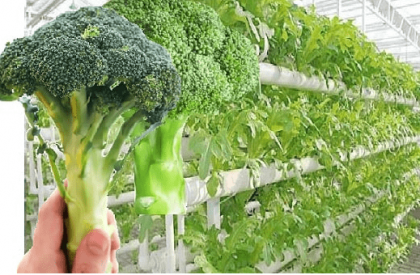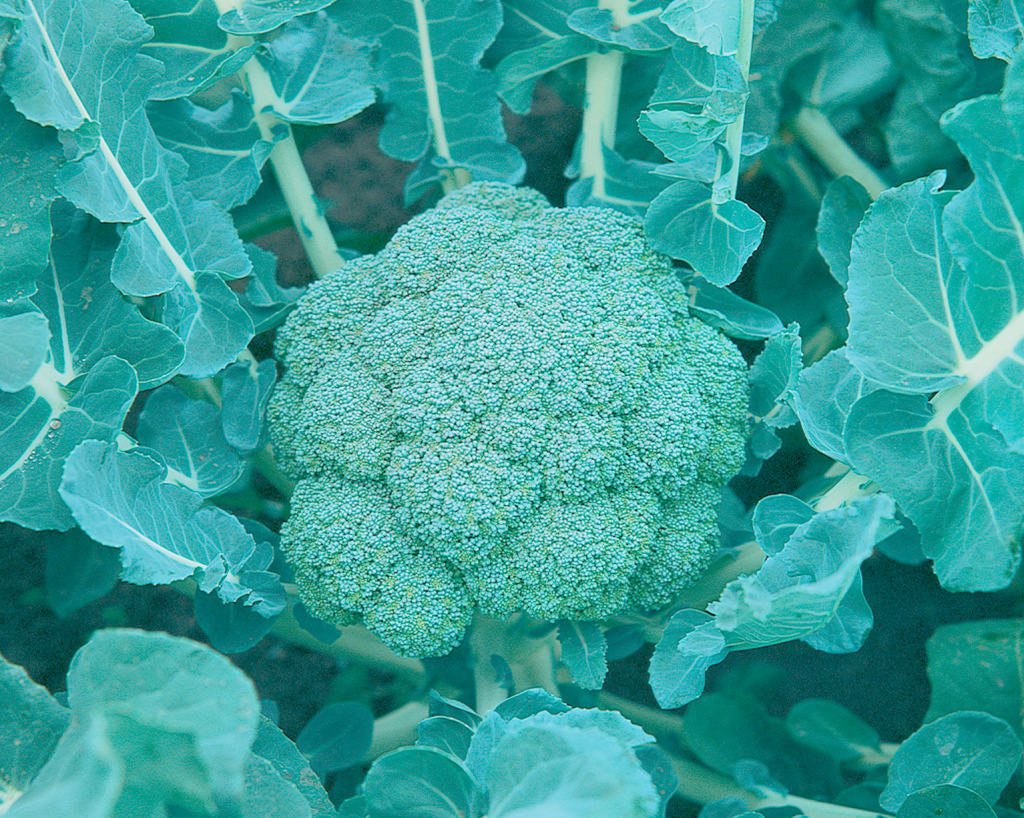Broccoli


Introduction – Broccoli is a vegetable that is very well suited to being grown hydroponically, is fast growing hydroponic plants in any of the hydroponic system same as its cousin vegetables hydroponic lettuce and hydroponic cabbage. As long as you are able to control the growing conditions it will surely give you a great crop each and every time much better than the conventional growing system. The best way to achieve this is to plan out your method in order to make sure you are able to provide your plant with the desired conditions in which they thrive. hydroponic broccoli sprouts in soil-less culture, hydroponics. The beauty of growing Brassica is, its species has considerable potential under hydroponic production. Not only can the everyday, old-fashioned cabbage and cauliflower be grown, but a diverse range of exotic broccoli, Asian brassica species are now grown hydroponically such as hydroponic broccolini, many of which are suited to smaller systems, NFT, solution culture, aeroponics, vertical farming broccoli, hydroponic Brussel sprouts, and even tray-based microgreen production.
Getting hydroponic broccoli started:
- This first step of raising hydroponic broccoli is to decide what actually you are starting with which cultivar or variety.
- Nowadays, standard head broccoli has been united by a variety of broccoli types including Raab, leaf, sprouting, and Chinese broccoli each of them with their own culinary uses. Sprouting broccoli, which is available as both green and intense purple colored types produce a number of small individual florets rather than a complete single head. Being very tender, sprouting broccoli can be eaten raw, steamed, or sautéed and has become an admired winter vegetable. Leaf broccoli is another option well-suited to small hydroponic systems, although lesser recognized as a culinary vegetable. These fancy leaf broccoli types may be grown as a baby leaf salad vegetable or larger leaves grown for their sweet, typical broccoli flavor.
‘Blue Wind’
(F1 hybrid, 49-55 days duration) is an extra-early variety that produces large, tight heads in about 60 days. Has good side shoot production for a longer harvest, and the tender, bluish-green leaves near the top of the plant.

Di Cicco’
(Heirloom Broccoli variety 48 days) is a multi-cut Italian heirloom variety that’s a good choice for the home gardener because plants mature at a variable rate. It produces a small, 3-4” (7-10 cm) main head, followed by a large number of tender side shoots appears over a few weeks. Harvest main head at 3” (7 cm) or less to encourage side shoot production.

Calabrese’
(Heirloom, 65 days) is great for fall planting since the heads get sweeter as the weather cools. Produces medium-sized, deep green heads. Bears good side shoot production after the central head is harvested.

Arcadia’
(F1 hybrid, duration 63-68 days) produces uniform, small-beaded purplish-green heads, each about 5-6” (13-15 cm) across. This is one of the best types of broccoli for fall and winter production. Has resistance to head rot, downy mildew, and brown bead.

Punjab Broccoli -1
leaves are smooth, wavy and dark green its main as well as secondary sprouts are dark green in color, as well as sprouts have bluish shade. The sprouts are also compact and attractive. It is ready after 65 days of transplanting. Suitable for both salad as well as cooking purpose.

- Starting from seed is the best and easy choice to grow broccoli in any hydroponic system, the seed takes about 7 to 14 days to germinate.
- Since it is a cold season crop so before sowing you can also give seeds chilling treatment by keeping them in the refrigerator for few days prior to sowing.
- Broccoli Seeds germinate ideally at temperatures between 45ºF to 80ºF but can also germinate at temperatures as low as 40ºF, with comparatively lower germination success rate.
- Broccoli seeds can be started usually, in rooter plugs with potting soil or coco peat and then transferred to the hydroponic setup when they sprout. Roughly 3 to 4 seeds per plugs are sufficient, anticipating that some will not germinate and weaker ones can be removed out later.
- They should be kept on a tray and watered daily with 1/4 strength nutrient solution till the seeds germinate. After sprouting it is advised to use half strength of the solution.
- Once the seedlings are growing, thin out the extra seedlings leaving only one of the fittest looking ones in each starter plugs. Some of the thinned out plants may be suitable for transplant elsewhere may be on the garden.
- When roots begin to show up and seedlings attain a few inches tall and it has 4-5 true leaves they are ready to leave the nest and enter into the hydroponic setup.
- Broccoli plantings should be staggered at roughly 3 to 4-week intervals in order to ensure a constant harvest.
- Transplanted seedlings can also be obtained from nurseries but it may bring soil-borne diseases and insect pest hence one has to be more careful when transplanting them in the hydroponic setup.
- pH is extremely significant in Hydroponic gardening. Broccoli thrives in a range of 6.0-6.8, PPM: 1960-2450 and EC: 2.8-3.5.
- Hydroponic broccoli grows well in most of the hydroponic system as long as they are given sufficient space to grow. Setups like dutch buckets, deep water culture, ebb and flow works excellent though NFT are less preferred because one has to adjust the width of pipe for broccoli to spread well.
- Broccoli grows finest when the daytime temperature is at 14-17°C. For head formation, varieties require a temperature of 10-15°C. Higher temperatures cause premature bolting
- The best time to harvest broccoli is when the head is developed, buds are firm but before the flower starts to open. It is better to harvest broccoli head only not the entire plant. Cutting the stalk of the main head at a slant about 4 to 5 inches below the broccoli head stimulates the more plant growth and give rise to more shoots. Hence more heads can be harvested repeatedly .it may take about 60 to 100 days to harvest after transplanting usually. Store fresh harvested hydroponic broccoli in the refrigerator for up to 5 days. If you wash before storing, make sure to dry it completely. Broccoli can also be blanched and frozen for up to one year.
Hydroponic Broccoli nutrients and pH
- Aphids: Curling leaves may indicate that the plant’s sap is being sucked by insects. To avoid apply soapy water to all sides of leaves whenever you see aphids.
- Downy mildew: Yellow patches on leaves are usually due to moist weather. Keep leaves as dry as possible with good air circulation. You can also buy resistant varieties.
- Cabbage loopers: the presence of small holes on the leaves between the veins might be because of green caterpillars. Look at the undersides of the leaves.
- Cabbageworms and other worm pests
- Cabbage Root Maggots
- Whiteflies
- Nitrogen deficiency: If you observe bottom leaves turning yellow and the problem continues toward the top of the plant, the plants require a high nitrogen (but low phosphorus) fertilizer.
Prominent Pests/Diseases of Broccoli:
Tips to grow Ginger faster
The most irritating problem we have found that the root does not grow faster. We want to grow them quickly to meet the market demand. After having a long conversation between successful ginger farmers we came to know something that we are doing wrong. Actually, we experiment with most of their tips. As success is badly required. So we suggest you practice these ginger farming techniques. Make sure soil is loose enough to grow ginger roots rapidly. Check the ginger root growth and health after two or three months. If they are not growing as you expected to taste the soil. PH should be maintained between 6.1 to 6.5. And, ginger is very dependent on fertilizer.
During the growing phase, it needs reasonably heavy and well-distributed showers. Ginger needs 2-5 hours of sunlight again direct sunlight is harmful, using a shade can be handy during hot noon. And always weed before fertilizing and mulching. You don’t want to fertilize the unwanted plants. When the soil becomes dry, watering is expected to keep the soil moistened, but don’t water to the period of sogginess. It should be lessened during the wintertime while the plant is dormant and must continue at the opening of spring. Which helps to grow ginger healthy. Powerful winds or badly draining loam can cause ginger rootlets stunted or distorted roots.
This is a very important part of ginger farming. You may agree with us that, the success of profitable farming depends on this. Yet! we think that farmers do not have the right information or knowledge about harvesting. As this differs from other crops. harvesting ginger It takes about 8-10 months of intense to grasp adulthood. Proper harvesting time would be after 8- 10 months of sawing. However, collecting ginger for vegetable purpose starts after 6 months And yielding when the leaves start turning yellowish is the best practice.
Customer Feedback
Talented Agronomist
Team Alexa made my Poly-House very well & also helped by assisting in organic Framing. Thanks & All the Best for the future.
Ms. Poonam Saxena, Indore (M.P.)
landownerExcellent job, excellent workmanship
Currently, Team Alexa helping me on Orchid Cultivation in Poly house. I’ve have to say till now everything is good and expecting the same for future.
Mr. Rajendra singh , Indore (M.P.)
landownerGreat ! Work
I would suggest Alexa Farms for Poly house Farming , Hi Tech Farming Organic Farming because there professionals have knowledge for all the crops.
Mahant Dharmendra Puri, Indore
landownerDone Wonderful job
Amazing design and installation of our new, beautiful yard. Gardener is professional, creative and knowledgeable designer.
Mark Angelino
NewyorkPlanting & Removal Charges
Within a your budget you can freshen up your plant with a few key upgrades that will increase your home’s curb appeal. A new gravel driveway or concrete walkway can make your home look like new. Small budgets are good for breaking up a larger project into manageable chunks, so you might splurge for a nice walkway this year and deal with the driveway later.

